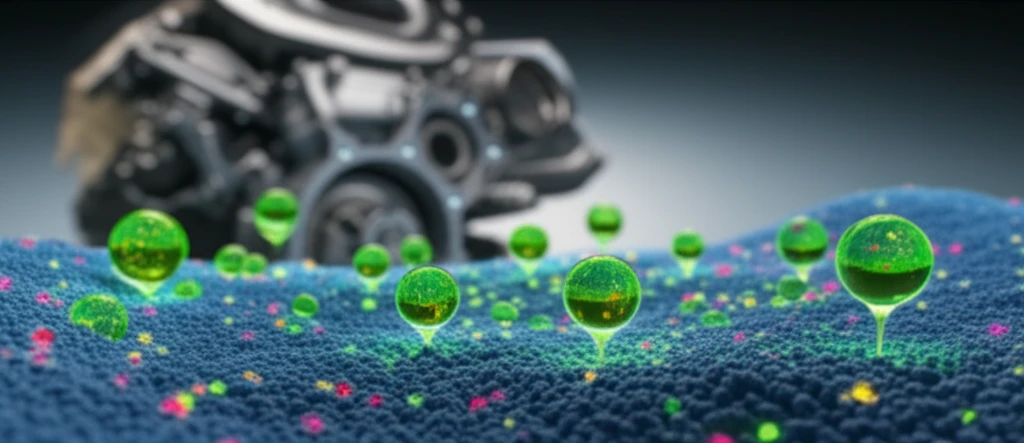
Biofuel's Hidden Impact: How Natural Tracers Reveal Polymer Degradation
"Unlock the secret of biofuel's effects on your vehicle's plastic components. Discover how scientists are using trace elements to protect your engine."
Biofuels are increasingly popular, but their impact on vehicle components, especially rubber hosing and polymer fittings, has been a growing concern. It's well-known that biofuels can cause abrasive effects, leading to the degradation of these materials over time. Understanding the kinetics of these effects is crucial for extending the lifespan and durability of vehicles and machinery using biofuels.
Unfortunately, directly measuring how biofuels interact with polymers is challenging. That's where an innovative approach comes in: using naturally occurring trace elements within the biofuel itself as markers or tracers. These markers allow scientists to indirectly observe and measure the adsorption and desorption processes that contribute to polymer degradation.
This article delves into a groundbreaking study that employs this method, focusing on neem biodiesel and its interaction with polypropylene, a common polymer used in vehicles. By tracking trace amounts of chromium (Cr³⁺/Cr⁶⁺) and arsenic (As³⁺/As⁵⁺) present in the biodiesel, researchers have gained valuable insights into the kinetics of adsorption and desorption, shedding light on how biofuels impact polymeric materials.
How Trace Elements Reveal the Biofuel-Polymer Interaction

The research team utilized a sophisticated technique called High-Performance Liquid Chromatography coupled with Inductively Coupled Plasma Mass Spectrometry (HPLC-ICP-MS) to monitor the movement of these trace elements. This method allowed them to precisely measure the levels of chromium and arsenic as the neem biodiesel interacted with polypropylene samples over an extended period.
- Specialized Equipment: HPLC linked to ICP-MS with a dynamic reaction cell (DRC) for superior mass detection.
- Trace Element Focus: Chromium (Cr3+/Cr6+) and Arsenic (As3+/As5+) served as natural tracers in neem biodiesel.
- Controlled Environment: Polypropylene samples immersed in biodiesel for 24 weeks, with periodic analysis.
- Data Analysis: Measurement of trace element levels determined adsorption/desorption rates.
Protecting Polymers: What This Means for Biofuel Use
This research highlights the potential for biofuels to gradually degrade polymer components in vehicles and machinery. However, the study also suggests a path forward. By understanding the factors that influence adsorption and desorption, particularly the role of water contamination, steps can be taken to mitigate these effects.
One key takeaway is the importance of using high-quality biodiesel with minimal water content. Reducing water contamination can significantly decrease the rate of polymer degradation, extending the lifespan of crucial components and reducing maintenance costs.
Furthermore, the novel technique developed in this study opens doors for future research. By using trace elements as natural markers, scientists can continue to investigate the complex interactions between biofuels and various materials, leading to the development of more durable and sustainable solutions.
